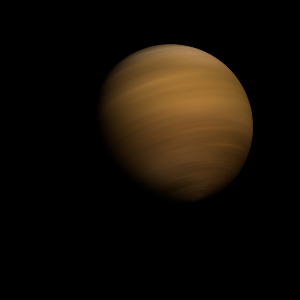|
|
Space Astro
|
Info for exoplanet "Jibyugyo"
| Scientific (actual) data |
|---|
| Planet | TOI-421 b |
| Planet status | Confirmed |
| Planet mass | 0.05107 |
| Radius | 0.4612 |
| Orbital period | 16.0681 |
| Semi major axis | 0.1182 |
| Inclination | 88.3 |
| Discovered | 2020 |
| Updated | 2020-04-22 |
| Tzero tr | 2458440 |
| Impact parameter | 0.75 |
| K | 4.64 |
| Temperature (kelvin) | 697 |
| Publication | Published in a refereed paper |
| Detection type | Primary Transit |
| Mass detection type | Radial Velocity |
| Radius detection type | Primary Transit |
| Star name | TOI-421 |
| Right ascension | 81.85° |
| Declination | -14.28° |
| Wikipedia article | TOI-421 b |
Back
| |
| Fictional info (?) |
|---|
| Suggested name | Jibyugyo |
| Planet type | Small cold gas planet |
| Jibyugyo is the largest and most crater filled planet in its solar system.
It is named after the deity Jibyugyo, the messenger of nature.
Jibyugyo is shrouded by an opaque layer of highly reflective clouds of sulfuric acid, preventing its surface from being seen from space in visible light.
As one of the most noticeable objects in the sky, Jibyugyo has been a major factor in native culture for as long as records have existed.
Jibyugyo can easily be seen from Pyumijo Zo with the naked eye, as can its brownish coloring.
It may also have a rocky core of heavier elements, but like the other small cold gas planets, Jibyugyo lacks a well-defined atmosphere. Because of its fast rotation, the planet's shape is that of an oblate spheroid (it has a slight but noticeable bulge around the equator).
In late February 1800, Jibyugyo was visited by the New Horizons probe, which used Jibyugyo's gravity to increase its speed and bend its trajectory en route to Pyumijo Zo. |
| Atmosphere | Ammonium hydrosulfide (NH4SH) | 40% |
| Nitrogen | 40% |
| Hydrogen | 13% |
| Helium | 6.9% |
| Argon | 0.26% |
| Atmospheric pressure | 4 bar |
 |
| Moon | Byuru | Medium-sized irregular oceanic planetoid |
| Himya Gya | Very small round gaseous asteroid |
| Radomyo Bi | Medium-sized irregular gaseous moon |
| Jiruika-ne | Medium-sized almost round rocky moon |
| Nyoguda So | Huge almost round crater-filled moon |
| Chozohi | Huge slightly egg-shaped rocky comet |
| Byukya'mupyora Chu | Medium-sized slightly egg-shaped oceanic moon |
| Sagyo Heji Ryu | Medium-sized almost round ice moon |
| Neosohyu | Small round crater-filled moon |
| Ramopi Hyamya | Large slightly egg-shaped rocky comet |
| Google search for Jibyugyo |
|
Website by Joachim Michaelis
|
|
|
|